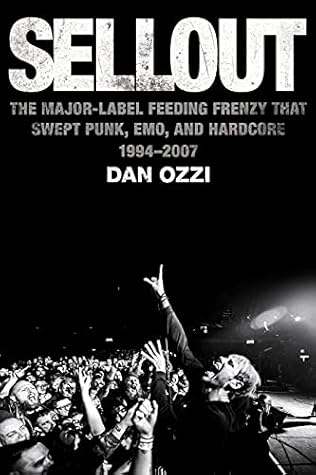More on this book
Community
Kindle Notes & Highlights
by
Dan Ozzi
Read between
February 5 - February 25, 2025
The band performed “86,” a new song wherein Armstrong lamented how, despite all the accolades, playing sold-out arenas around the world and landing on numerous magazine covers, he was still heartbroken about their ban from Gilman Street. “We’ve played in front of 20,000, 30,000 people,” the frontman told SPIN, “and I still haven’t felt the same thing that I felt playing in that place.”
The result of Jimmy Eat World’s go-for-broke efforts was Clarity, a sweeping epic of an album that fused textured orchestral compositions with whimsical rock arrangements. Its opener, “Table for Glasses,” was a slow burner that flooded open midway through with a thundering boom of Lind’s concert bass drum. From there, the band seamlessly weaved together the fully realized version of a driving rock sound they’d been chasing for three years with delicate string sections and twinkling bells. Its final track, “Goodbye Sky Harbor,” was a looping, sixteen-minute sendoff full of references to John
...more
Blink tried their hand at playing their first handful of songs in public and got the reception they more or less expected. “The very first show we ever played was a bar called the Gorilla Pit,” says Hoppus. “It was a weeknight, and we drove in and it was me, Tom, Scott, and Cam, who was a friend of ours that we skated with. We loaded in and there was literally the bartender and one patron sitting at the bar. He said we could set up on the stage. We set up and started playing the first song. After the first song the bartender said, ‘Hey, please turn it down.’ So we turned it down. We played
...more
The member who struggled the most in the studio was Raynor, who’d broken both of his feet and was wheelchair-bound. “I think what happened was, they were celebrating signing to MCA and he was partying a little too hard and jumped off the second story, trying to go into a pool, and missed or something,” says Trombino. “Fortunately, by the time we recorded, his bass-drum foot was fine, but his hi-hat foot, he couldn’t really use it. But the dude played. As a drummer, I was impressed. He would wheel up in his wheelchair, lift himself onto his seat, and bust it out.”
If a template needed to be drawn of a structurally perfect pop-punk song, it would unquestionably look like “Dammit.” It led with an earworm hook that sounded like DeLonge rushing through a guitar lesson before passing the ball to Hoppus, who delivered his best vocal performance to date. Instead of his usual ho-hum half singing, the bassist put oomph into each and every word. His verses had heart and his choruses had bite. But “Dammit” was more than the sum of the members’ strongest efforts. After four years together, the guys had finally figured out how to write an actual song. Whereas most
...more
“I thought that something cool was happening with ‘Dammit.’ It had an immediacy to it,” remembers Hoppus. “We spent a lot of time in the studio on that song. That song almost didn’t make the record. We had run out of time. It was nearing the holidays and everyone was breaking to go do different things. It was the last day in the studio and I shredded my voice singing ‘Dammit.’ I was smoking Marlboro Reds, I was drinking nothing but soda. Never a sip of water, never not smoking—the worst stuff you can do for your voice.”
As a replacement, DeLonge and Hoppus poached the Aquabats’ drummer, Travis Barker. A fellow product of the West Coast punk scene, Barker was a drum savant who had an athlete’s discipline behind the kit. He’d filled in on a couple of gigs that Raynor had missed because of personal obligations, and allegedly learned the band’s entire set in thirty-five minutes before their first performance together.
At the Drive-In lugged their records to out-of-town gigs but could barely sell enough to pay for gas. “On our first tours, no one bought our merch,” says Bixler-Zavala. “What we did was, we went to Juárez and bought like a hundred dollars’ worth of wrestling masks and really shitty cigarettes called Faros that have no filter and are really awful. That’s what kept us fed, just selling those.”
The album’s breakneck single, “One Armed Scissor,” lit up college radio and hit number 26 on the Billboard Alternative Songs chart, with its concert-footage-heavy music video earning regular MTV rotation. The band also cut through the late-night talk show circuit, literally bouncing off the walls in instantly legendary performances on Conan and Letterman. They brought the same intensity overseas for a performance on Later . . . with Jools Holland. During their performance, Bixler-Zavala flung a chair across the room, to the bemusement of the British studio audience, which included pop bad boy
...more


